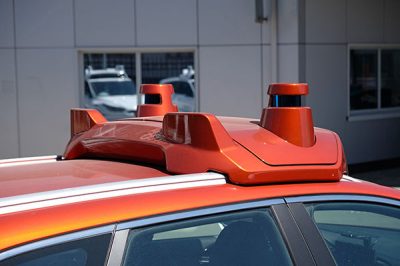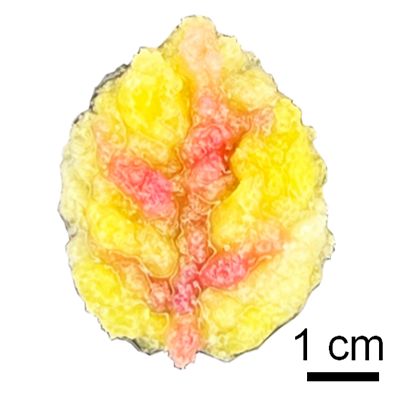FOR IMMEDIATE RELEASE
“Designing Novel LiDAR-Detectable Plate-Type Materials: Synthesis, Chemistry, and Practical Application for Autonomous Working Environment”
ACS Applied Materials & Interfaces
Driving at night might be a scary challenge for a new driver, but with hours of practice it soon becomes second nature. For self-driving cars, however, practice may not be enough because the lidar sensors that often act as these vehicles’ “eyes” have difficulty detecting dark-colored objects. Research published in ACS Applied Materials & Interfaces describes a highly reflective black paint that could help these cars see dark objects and make autonomous driving safer.

Lidar, short for light detection and ranging, is a system used in a variety of applications, including geologic mapping and self-driving vehicles. The system works like echolocation, but instead of emitting sound waves, lidar emits tiny pulses of near-infrared light. The light pulses bounce off objects and back to the sensor, allowing the system to map the 3D environment it’s in. But lidar falls short when objects absorb more of that near-infrared light than they reflect, which can occur on black-painted surfaces. Lidar can’t detect these dark objects on its own, so one common solution is to have the system rely on other sensors or software to fill in the information gaps. However, this solution could still lead to accidents in some situations. Rather than reinventing the lidar sensors, though, Chang-Min Yoon and colleagues wanted to make dark objects easier to detect with existing technology by developing a specially formulated, highly reflective black paint.
To produce the new paint, the team first formed a thin layer of titanium dioxide (TiO2) on small fragments of glass. Then the glass was etched away with hydrofluoric acid, leaving behind a hollow layer of white, highly reflective TiO2. This was reduced with sodium borohydride to produce a black material that maintained its reflective qualities. By mixing this material with varnish, it could be applied as a paint. The team next tested the new paint with two types of commercially available lidar sensors: a mirror-based sensor and a 360-degree rotating type sensor. For comparison, a traditional carbon black-based version was also evaluated. Both sensors easily recognized the specially formulated, TiO2-based paint but did not readily detect the traditional paint. The researchers say that their highly reflective material could help improve safety on the roads by making dark objects more visible to autonomous vehicles already equipped with existing lidar technology.
The authors acknowledge funding from the Korea Ministry of SMEs and Startups and the National Research Foundation of Korea.
###
The American Chemical Society (ACS) is a nonprofit organization chartered by the U.S. Congress. ACS’ mission is to advance the broader chemistry enterprise and its practitioners for the benefit of Earth and all its people. The Society is a global leader in promoting excellence in science education and providing access to chemistry-related information and research through its multiple research solutions, peer-reviewed journals, scientific conferences, eBooks and weekly news periodical Chemical & Engineering News. ACS journals are among the most cited, most trusted and most read within the scientific literature; however, ACS itself does not conduct chemical research. As a leader in scientific information solutions, its CAS division partners with global innovators to accelerate breakthroughs by curating, connecting and analyzing the world’s scientific knowledge. ACS’ main offices are in Washington, D.C., and Columbus, Ohio.
To automatically receive press releases from the American Chemical Society, contact newsroom@acs.org.
Note: ACS does not conduct research, but publishes and publicizes peer-reviewed scientific studies.







